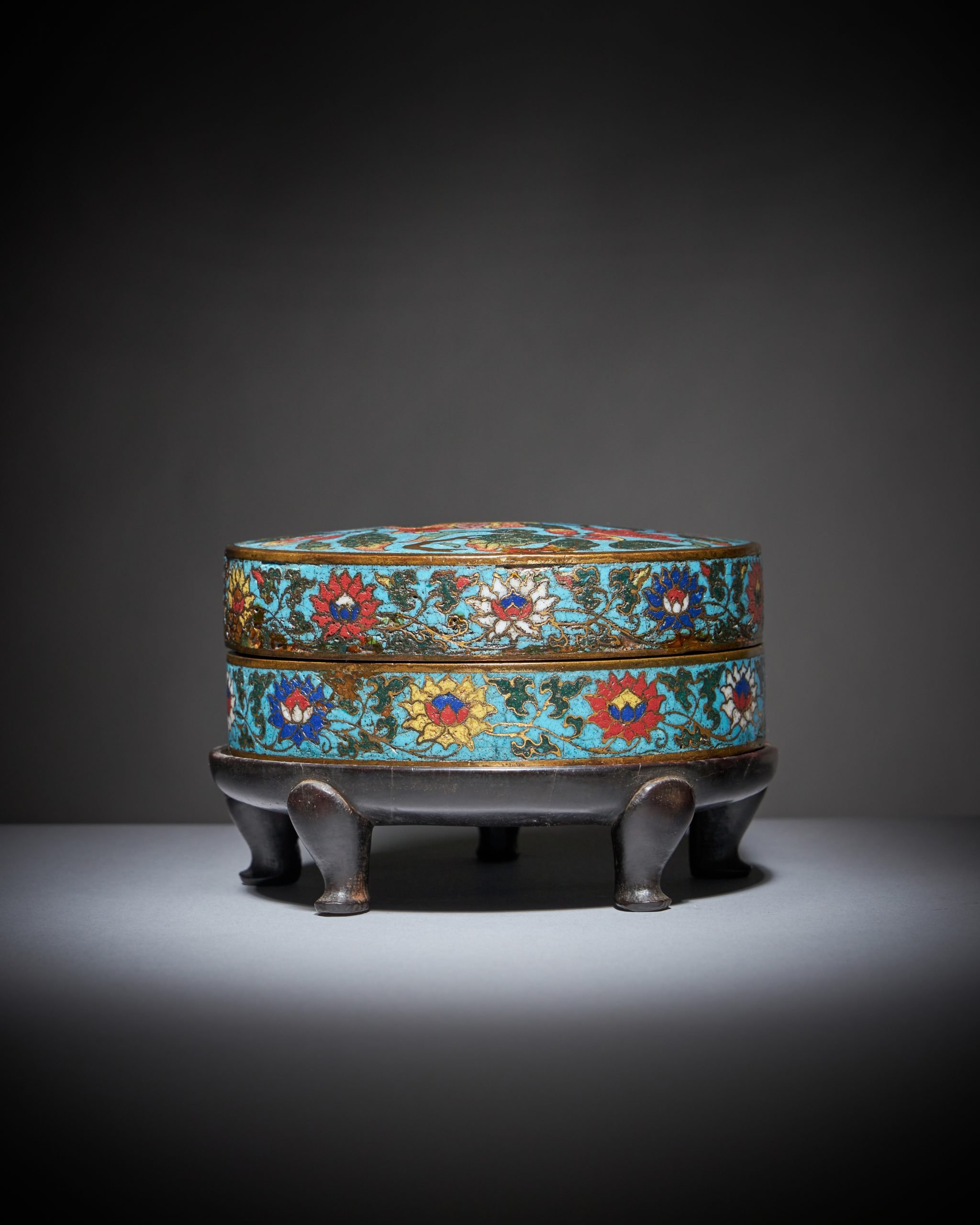
Believed lost for decades, an exceptionally rare Chinese Ming Dynasty cloisonné box was a surprise hit at auction, selling at Dreweatts in Berkshire, U.K., for £288,000 ($358,000). It was expected to fetch just £6,000 to £10,000 ($7,470 to $12,460).
That’s a 2,880 percent increase from the high estimate—or, a more than 1.5 million percent mark up from the mere £19 ($79) that Edward Copleston Radcliffe paid for it at Sotheby’s back in 1946.
The decorative box was made for Xuande, the fifth Emperor of the Ming dynasty (1426–35), and his six-character reign mark is incised on its base. The enamel and wire design features lotus scrolls and gnarled gold branches with flowers and fruits, including two ripe pomegranates, a symbol of fertility and prosperity.
Radcliffe, a major who served in both World Wars, collected Chinese art for decades, owned an antiques shop in London, and was even a practicing artist in his own right.
Edward Copleston Radcliffe, whose collection of Chinese antiquities resulted in a white glove sale at Dreweatts. Photo courtesy of Dreweatts.
He loaned the circular pomegranate box to the National Gallery of South Africa for a 1953 exhibition of Chinese artifacts. It’s believed to be just one of five works of its kind, three of which are in institutional collections, including the Palace Museum in Beijing.
But when Radcliffe died in 1953, his family forgot about the diminutive antiquity. For decades, it languished in the attic, collecting dust alongside other less valuable collectibles in an overlooked cabinet.
Then, the family called Dreweatts. Auction specialists Mark Newstead and Yingwen immediately spotted the Xuande mark, but initially assumed it had to be a later copy.
The Xuande mark on the Chinese Ming dynasty cloisonné box sold by Dreweatts. Photo courtesy of Dreweatts.
“Cloisonné enamel pieces from the early Ming period are exceptionally rare as production was strictly regulated by the Imperial Palace eunuchs,” Newstead, Dreweatts’s director of Asian ceramics and works of art, said in a statement.
The presale estimate was based on the assumption the work had been produced in the 17th century.
“It was only when my colleague, Yingwen Tao, was able to compare it with the example at Fenton House in London that we started to believe it could be a ‘lost’ example of this rare group,” Newstead added. “We knew it would attract worldwide attention.”
Edward Copleston Radcliffe’s collection of Chinese antiquities, seen here in a dusty attic cabinet, resulted in a white glove sale at Dreweatts. Photo courtesy of Dreweatts.
“It’s definitely a highlight of my career,” he said. “I’ll probably never see anything as rare as this again, but never say never!”
A private collector in Asia defeated eight other telephone bidders to secure the winning bid.
The box was the top result of 87 lots from Radcliffe’s collection, all of which sold, for a total of £947,000 ($1.18 million). Other highlights included a Qing Dynasty translucent jadeite dish for £53,480 ($66,600), a Song Dynasty celadon ribbed vase for £34,000 ($42,300), and a Song Dynasty Junyao dish for £22,000 ($27,400).
The collector paid between £7 ($29) and £42 ($174) for these treasures when he acquired them in the 1940s.
See more photos of the box and other lots from the auction below.
A rare Chinese cloisonné “pomegranate” box and cover from the collection of Edward Copleston Radcliffe. Photo courtesy of Dreweatts.
A rare Chinese cloisonné “pomegranate” box and cover from the collection of Edward Copleston Radcliffe. Photo courtesy of Dreweatts.
A rare Chinese cloisonné “pomegranate” box and cover from the collection of Edward Copleston Radcliffe. Photo courtesy of Dreweatts.
A Song Dynasty celadon ribbed vase from the collection of Edward Copleston Radcliffe sold for £34,000 ($42,300) at Dreweatts. Photo courtesy of Dreweatts.
A rare small Chinese Yaozhou celadon “fish” conical bowl from the collection of Edward Copleston Radcliffe sold for £24,000 ($29,900) at Dreweatts. Photo courtesy of Dreweatts.
A Chinese Lanyao red monochrome bowl from the collection of Edward Copleston Radcliffe sold for £28,000 ($34,900) at Dreweatts. Photo courtesy of Dreweatts.
A Qing Dynasty translucent jadeite dish from the collection of Edward Copleston Radcliffe sold for for £53,480 ($66,600) at Dreweatts. Photo courtesy of Dreweatts.